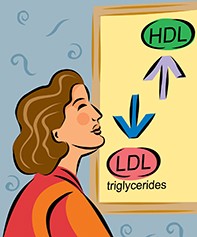Peer Reviewed
Perspectives
Fibrate therapy for dyslipidaemia and prevention of cardiovascular disease
Abstract
The main use of fibrates is for the treatment of dyslipidaemia to lower plasma triglyceride levels and to raise HDL-cholesterol (HDL-C) levels. The effects of fibrates on LDL-cholesterol levels vary. Fibrates may be used either as monotherapy or in combination with statins. When combined with statins, fenofibrate is the preferred fibrate as it has a low risk of myopathy. The benefits of fibrate therapy in preventing ischaemic cardiovascular disease events appear to be confined to patients with baseline dyslipidaemia (raised triglyceride levels and/or low HDL-C levels).
Key Points
- Fibrates are first-line drugs for the treatment of patients with high triglyceride levels and have variable effects on reducing LDL-cholesterol levels, for which statins are first-line therapy.
- Fibrate therapy reduces concentrations of atherogenic small dense LDL-cholesterol, while raising HDL-cholesterol and lowering triglyceride levels. These changes are likely to be protective against ischaemic cardiovascular disease.
- Several randomised controlled trials have consistently shown reduction of ischaemic heart disease events with fibrate therapy. This is confined to patients with dyslipidaemia (low HDL-cholesterol and/or high triglyceride levels).
- Fenofibrate is preferred to gemfibrozil when combined with a statin because of a lower risk of muscle side effects.
Purchase the PDF version of this article
Already a subscriber? Login here.

